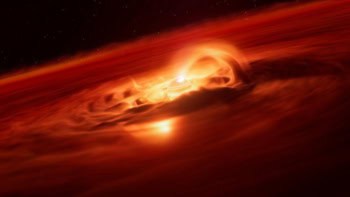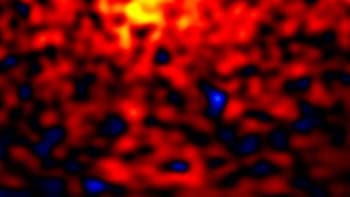
Rocky exoplanets orbiting some Sun-like stars in the Milky Way galaxy could be hotter and more geologically active than Earth and its solar-system companions, according to researchers in the US. The team looked at the abundance of radioactive elements such as thorium, which heat the interior of planets as they decay and thereby play an important role in how planets evolve. The team concluded that planets that are richer in thorium than Earth could be good candidates for the development of life – making them targets for study by astrobiologists and exoplanet hunters.
The research was done by Cayman Unterborn and colleagues at Ohio State University, who used data gathered by the European Southern Observatory’s High Accuracy Radial Velocity Planet Searcher (HARPS) spectrometer in Chile. The team focused on “solar twins”, which are stars that resemble the Sun in terms of their ages, sizes and general make-up. By looking at the abundances of radioactive elements potassium, thorium and uranium within these stars, the team was able to infer the compositions of any rocky exoplanets that may be orbiting the stars. In particular, exoplanets orbiting a star with more thorium than the Sun, for example, would be likely to contain more thorium than the planets in our solar system.
Scattered around the galaxy
Of the eight solar twins studied so far, seven display far higher concentrations of thorium than the Sun. “It all starts with supernovae,” explains Unterborn, who led the study. “The elements created in a supernova determine the materials that are available for new stars and planets to form. The solar twins we studied are scattered around the galaxy, so they all formed from different supernovae. It just so happens that they had more thorium available when they formed than [the Sun] did.”
On terrestrial planets such as Earth, plate tectonics is partially driven by heat produced in the mantle by the decay of radioactive elements. “The core is hot because it started out hot, but the core isn’t our only heat source. A comparable contributor is the slow radioactive decay of elements that were here when the Earth formed,” explains Wendy Panero at Ohio State.
On Earth, most of this heat comes from uranium. However, thorium has a longer half-life than uranium and the potential to produce more energy – and therefore thorium acts as a greater and more prolonged heat source. Planets with higher concentrations of this element would therefore not only be hotter, but would also stay that way for longer – leading to more dynamic and longer-running tectonic activity.
Recycling and replenishing
It is believed that plate tectonics might play an important part in maintaining the presence of water on a planet’s surface – along with recycling and replenishing the other chemicals needed to support basic life. Unterborn and colleagues therefore believe that any planets around these thorium-rich solar twins might be more likely to host alien life than if they were orbiting the Sun. Furthermore, longer-running plate tectonics could also mean that life on such planets would have more time to develop than here on Earth. In addition, the extra heat from the thorium could mean that the habitable zone – the range of planetary orbits in which life could exist – of such stellar systems could be larger than that of our solar system. “If it turns out that these planets are warmer than we previously thought, then we can effectively increase the size of the habitable zone around these stars,” says Unterborn.
“Across the galaxy, it makes sense that natural variation would exist in the amount of radioactive elements inside stars like ours,” comments Kathleen Campbell at the University of Auckland, New Zealand. “It is exciting to think we can remotely estimate the size of a solar system’s habitability zone, with the implication that there could be more opportunities for life to take hold amongst its suite of terrestrial inner rocky planets.” But she also points out that what is unclear from this study, however, “is why [the] longer-lived existence of plate tectonics would necessarily give more time for life to arise, since it arose quite early in Earth’s history. A key seems to be the presence of water, in liquid or solid form”.
Early stage
“At this point, all we can say for sure is that there is some natural variation in the amount of radioactive elements inside stars like [the Sun],” cautions Unterborn, as the results are at the preliminary stage. “With only nine samples including the Sun, we can’t say much about the full extent of that variation throughout the galaxy.” For Unterborn, who presented these results during last week’s meeting of the American Geophysical Union in San Francisco, the research continues. Planned developments include further analysis of the HARPS data to improve the accuracy of the computer models used in this study, as well as searching for more solar twins for comparison.



